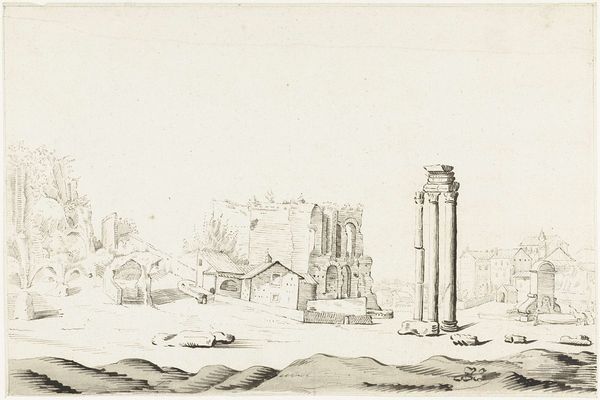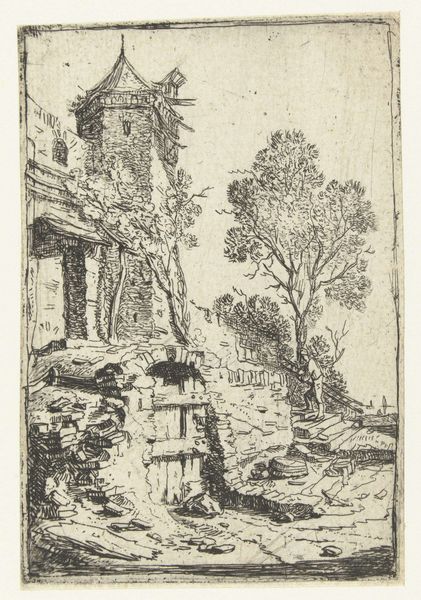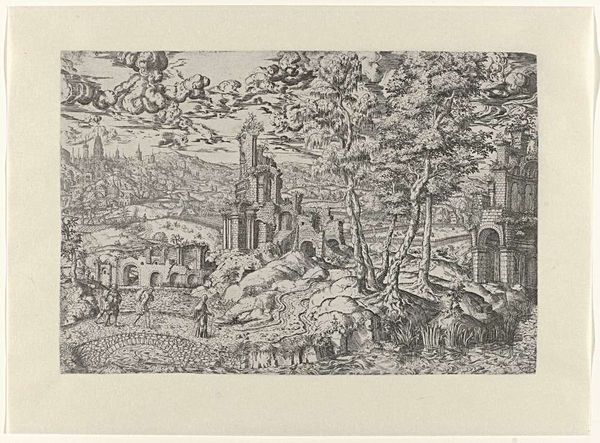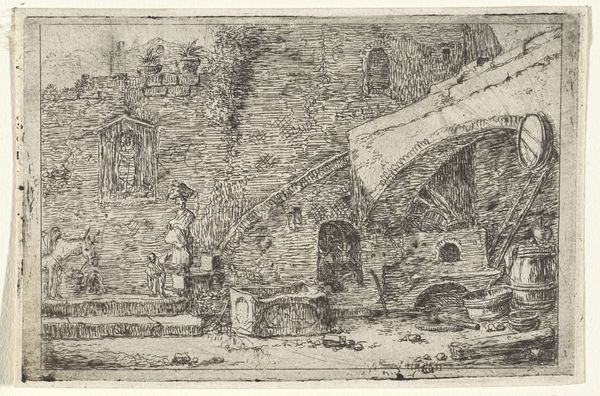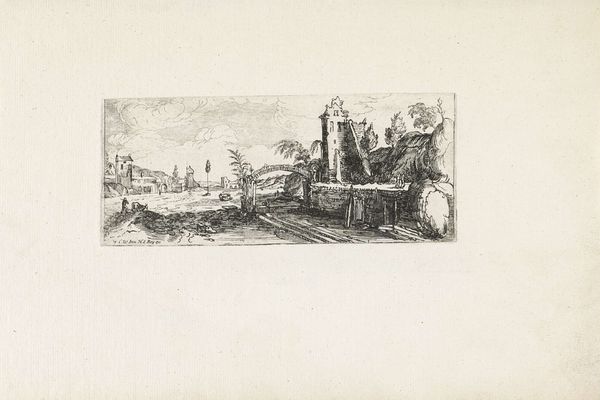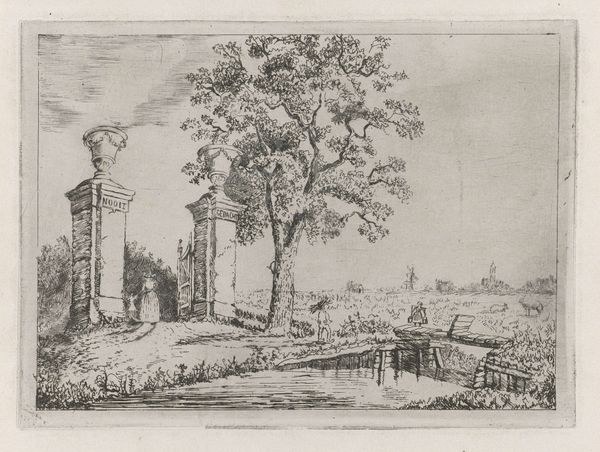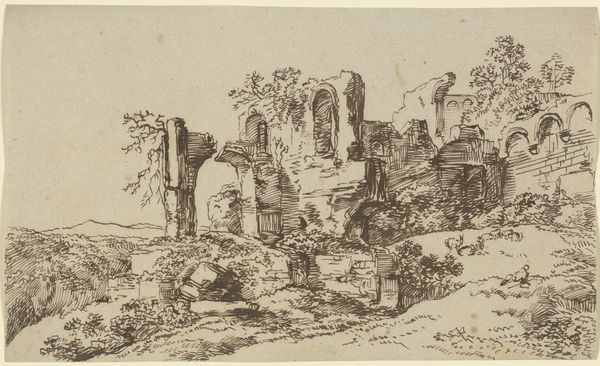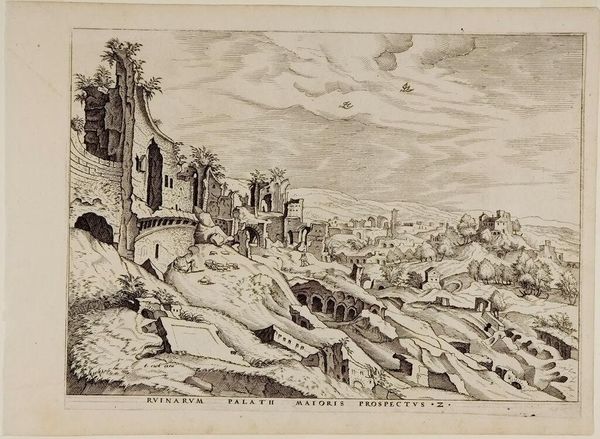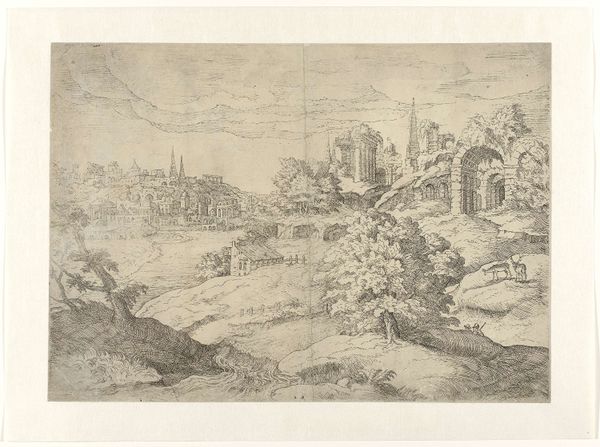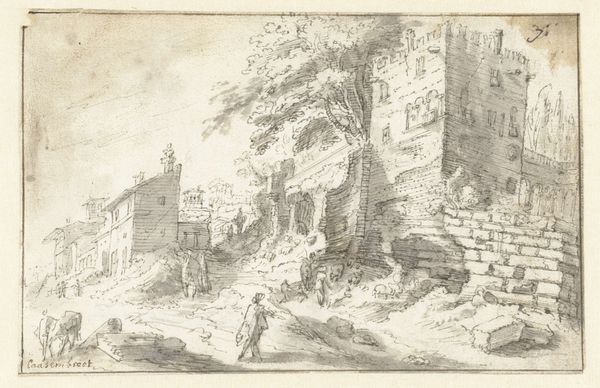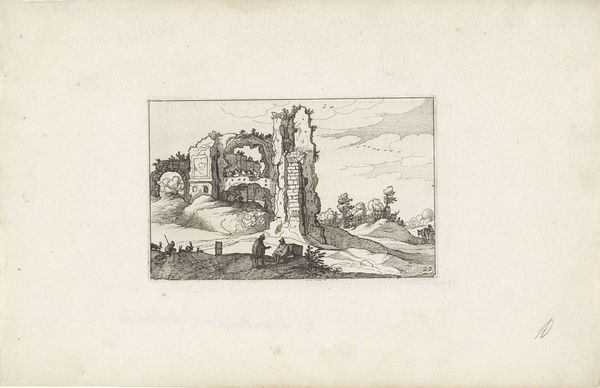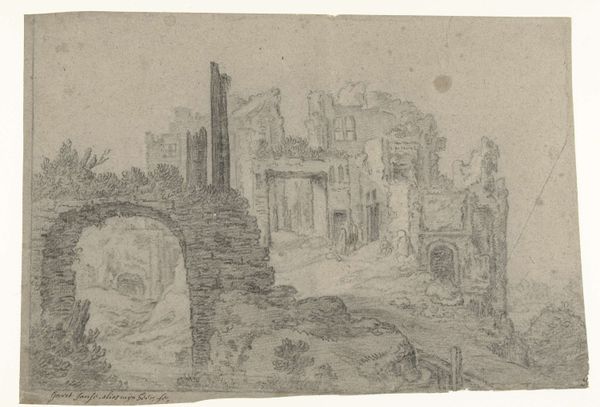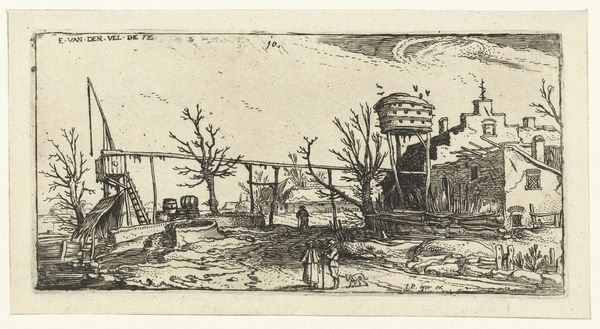
Graftombe aan de Via Cassia en het paleis van Buoncompagna 1635 - 1645
0:00
0:00
drawing, etching, ink
#
drawing
#
baroque
#
pen drawing
#
etching
#
landscape
#
ink
#
geometric
#
cityscape
Dimensions: height 24 mm, width 93 mm
Copyright: Rijks Museum: Open Domain
Editor: This drawing by Bartholomeus Breenbergh, "Graftombe aan de Via Cassia en het paleis van Buoncompagna," made between 1635 and 1645 with ink and etching, seems to capture a scene of both grandeur and decay. The architecture is imposing, yet the figures appear small and somewhat lost within the landscape. What strikes you most about this piece? Curator: What I see is a narrative deeply entrenched in the politics of representation. Breenbergh isn't simply depicting a landscape; he's presenting a vision of power, history, and perhaps even critique. The Via Cassia, a historic Roman road, is laden with associations of empire and conquest. What does it mean to depict a tomb along such a path? Whose stories are prioritized when we monumentalize certain histories? Editor: That’s fascinating. I hadn't considered the loaded history embedded in the Via Cassia. Does the depiction of ruins suggest a commentary on the transience of power? Curator: Precisely. Think about the palace juxtaposed with the tomb. Breenbergh might be subtly questioning the very structures of power and their legacies. Are we meant to see this as a memento mori, a reminder of mortality and the fleeting nature of worldly achievements for those in positions of power? Or is there also perhaps, a commentary on the relationship between wealth and the landscape, hinting at environmental exploitation or the dispossession of indigenous peoples. How does this image make you consider the legacy of colonialism inherent in landscape art? Editor: I see your point. The crumbling structures certainly introduce a sense of vulnerability to these symbols of authority. Considering the broader political context certainly reshapes how I perceive the image. Curator: Art like this challenges us to question whose stories are told and how. We must constantly excavate the social and historical contexts embedded in seemingly simple landscapes. Editor: Thank you for pointing that out; now I see this artwork as a layered commentary rather than just a picturesque scene. Curator: Indeed. Art provides the space for that ongoing dialogue with history.
Comments
No comments
Be the first to comment and join the conversation on the ultimate creative platform.
